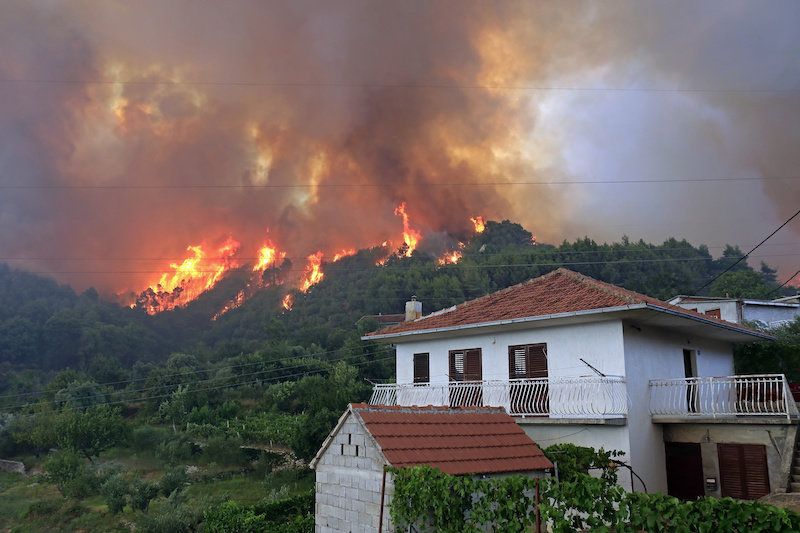Wildfires are happening more frequently across the United States and all over the world. Just this year, California has recorded its second-largest wildfire. The Dixie fire has been burning for over a month and, as of Aug. 18, has claimed 635,728 acres. Only 33 percent has been contained as of this writing.

California is not the only one burning. Greece, Turkey, and Italy have also been forced to evacuate residents and tourists as wildfires engulfed land around the Mediterranean Sea. Russian fires have been devouring Siberia since late spring, and now, reports claim that the disaster has already broken annual records for greenhouse gas emissions.
The consequences of climate change are now undeniable, and it will only get worse.
Experts warn that the rising global temperature will only fuel wildfires. These events will happen more frequently, be more challenging to put out and affect more people. Moreover, wildfires release carbon dioxide into the atmosphere and destroy forests that absorb greenhouse gases, threatening to exacerbate the ongoing climate crisis.
People should be prepared for incoming weather events. In 2020, wildfires across the U.S. cost insurers between $7 billion to $13 billion. The losses in northern California alone, the worst hit, were estimated to be up to $9 billion.
Should homeowners be making their homes resistant to wildfires?
Fireproof Home of the Future?
There is no such thing as an entirely fireproof home. Any house can still burn down when exposed to flames. Places that use wood are even more vulnerable to fire.
However, there are ways to make a house resistant to wildfires.
First, use materials that are not flammable. Wood is kindling for the fire and should not be used on a house’s exterior, including the deck. No matter how cozy a wooden house looks, it will only be risky if used in an area where wildfires happen. Wooden houses will be among the first to go up in flames in a wildfire.
Other building materials are considered to be fire-safe. A concrete wall, for example, can withstand extremely high heat, and so do metal roofs. The house would not instantly be burned down even if a fire broke out.
Homeowners can also utilize fire-resistant glass. The material is expensive, but it is worth it. When installed as windows, this type of glass can repel heat, preventing the fire from spreading throughout the house.
Those who cannot afford fire-resistant glass can instead use double-pane windows, which will be more resilient to extreme heat than single-pane windows.
Vents Must Go
A house built to survive wildfires from the outside would be effective if, somehow, the flames manage to get inside. Even when the exterior is protected from blazing flames, the household will still suffer material losses.
There is a story of one California home where the wildfire from the outside did not engulf the house but burned down from the inside. The homeowner found that embers floated into the place through the soffit vents or the holes under the roof that allowed the attic to breathe. That is how the property was combusted and destroyed by the fire.
So, a house located in an area at risk of wildfires should eliminate any nooks and crannies where embers can enter the house. Some architects and homeowners have considered removing vents to fortify the structure against wildfires.
Wildfire-Defending Landscape
A house vulnerable to wildfires does not have to look like a desert. There is a way to have a green backyard and front yard while still being protected from the destruction caused by natural disasters.
Again, homeowners must use fire-resistant building materials. Rather than a wooden patio or deck, go for concrete. It is also wise to erect stone walls or metal fences around the property not to burn down when the surrounding environment catches fire.
There are no fireproof plants, but there is vegetation that is more resilient to flames. Anything with high-moisture content, such as aloe or ice plants, will resist high temperatures without contributing to the spread of the wildfire. Hardwood, maple, and cherry trees are less flammable.
Moreover, mow the lawn regularly. Tallgrass will catch fire immediately. Short grass makes wildfires in the property easier to control.
Wildfires are devastating. It claims many people’s lives and causes hundreds of families to lose their homes. While they still can, homeowners should take steps toward making their homes more resilient to wildfires.




